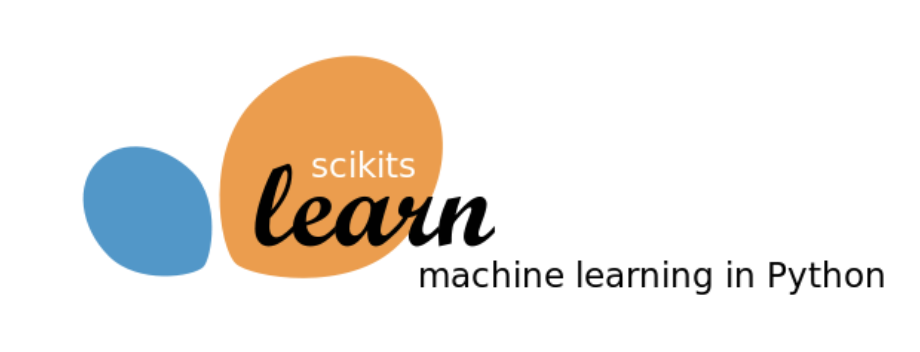Using Scikit-Learn for Machine Learning in Python

Data scientists using Python must be comfortable and proficient in using scikit-learn, which is why Flatiron School’s Data Science Bootcamp emphasizes it throughout its curriculum.
Python is an interpreted, object-oriented, high-level programming language with dynamic semantics. Given that Python is the most widely used language in data science and taught in Flatiron’s Data Science Bootcamp, we’ll begin by describing what the aforementioned terms mean before turning to the topic of using scikit-learn.
An interpreted language is one that is more flexible than a compiled language like C since it directly executes instructions written within the language.
An object-oriented language is one that is designed around data or objects.
A high-level programming language is one that can be easily understood by humans since its syntax reflects human usage.
Finally, dynamic semantics is a framework that allows the meaning of a term to be updated based on context. All of these attributes of Python make it work well within data science since it is a flexible, easy-to-read language that works with data well.
Python’s Libraries
Python’s power is expanded by the use of libraries. A Python library is a collection of related modules that allow one to perform common tasks without having to create the functions for the tasks anew. Two libraries that are inevitably used when working with Python in data science are NumPy and pandas. The former allows one to efficiently deal with large matrices and perform mathematical operations on those objects. The latter offers data structures and operations for data manipulation and analysis.
In Flatiron’s Data Science Bootcamp, among the first tools that one learns when being introduced to Python are NumPy and pandas. While there are a number of other widely used tools in Python for data science, I’ll mention the following, which are also taught in the bootcamp:
- SciPy and statsmodels are used for scientific and statistical computing
- Matplotlib and seaborn are used for data visualizations
- Keras, which is built on TensorFlow, is used for deep learning
From here on out, we’ll focus on scikit-learn since it is the primary library for machine learning in Python.

Two Types of Machine Learning
Machine learning is a branch of artificial intelligence and computer science that uses data and algorithms to imitate the way humans learn. Machine learning is often distinguished between supervised and unsupervised learning.
In supervised learning, the algorithm learns from labeled data. Here, each example in the data set is associated with a corresponding label or output. An example of supervised learning would be an algorithm that is learning to correctly identify spam or not-spam email.
In unsupervised learning, the algorithm learns patterns and structures from unlabeled data without any guidance in the form of labeled outputs. Market clustering, where an algorithm creates clusters of individuals based on demographic data is an example of unsupervised learning.
Using Scikit-Learn: Key Features
Scikit-learn is a popular open-source machine learning library for the Python programming language. It provides simple and efficient tools for data mining and data analysis and is built on top of other scientific computing packages such as NumPy, SciPy, and matplotlib. The following are all key features that help data scientists using scikit-learn work smoothly and efficiently.
Consistent API
Scikit-learn provides a uniform and consistent API for various machine learning algorithms, making it easy to use and switch between different algorithms. Other libraries such as the aforementioned Keras mimic the scikit-learn syntax, which makes learning how to use other libraries easier.
Wide Range of Algorithms
It offers a comprehensive suite of machine learning algorithms for various tasks, including:
- Classification (identifying which category an object belongs to)
- Regression (predicting a continuous-valued attribute associated with an object)
- Clustering (automatic grouping of similar objects into sets)
- Dimensionality reduction (reducing the number of random variables to consider)
- Model selection (comparing, validating, and choosing parameters and models)
- Preprocessing (feature extraction and normalization)
Ease of Use
Scikit-learn is designed with simplicity and ease of use in mind, making it accessible to both beginners and experts in machine learning. This is not only an artifact of scikit-learn being designed well, but it being a library in Python.
Integration with Other Libraries
It integrates seamlessly with other Python libraries such as NumPy, SciPy, and matplotlib (all of which it is built on). This allows for efficient data manipulation, computation, and visualization.
Community and Documentation
Scikit-learn has a large and active community of users and developers, providing extensive documentation, tutorials, and examples to help users start solving real-world problems. In our experience, we have not used better documentation for any programming language or library than what there is for scikit-learn.
Performance and Scalability
While scikit-learn may not be optimized for very large datasets or high-performance computing, it offers good performance and scalability for most typical machine learning tasks. For very large data sets and interacting with the cloud, there are similar libraries available, such PySpark’s machine learning library MLlib.
Using Scikit-Learn: Conclusion
Overall, scikit-learn is a powerful and versatile library. It’s a standard tool for machine learning practitioners and researchers due to its simplicity, flexibility, and wide range of capabilities. Currently, it is not possible to be a data scientist using Python and not be comfortable and proficient in scikit-learn. That’s why our Flatiron School emphasizes it throughout its curriculum.
Want to Learn About Careers in Data Science?
Learn about data science career paths through our Data Science Bootcamp page. Curious to know what students learn during their time at Flatiron? Join us for our Final Project Showcase and see work from recent grads.
Disclaimer: The information in this blog is current as of February 29, 2024. Current policies, offerings, procedures, and programs may differ.



